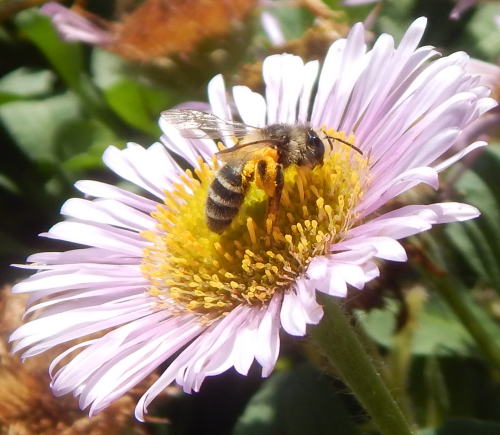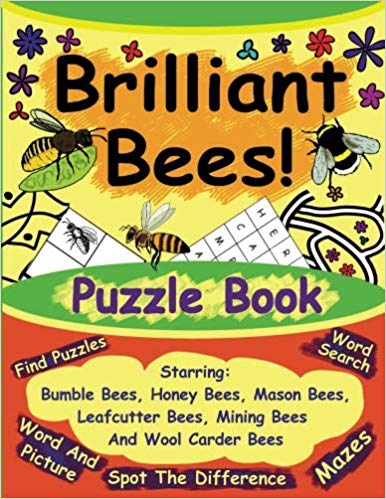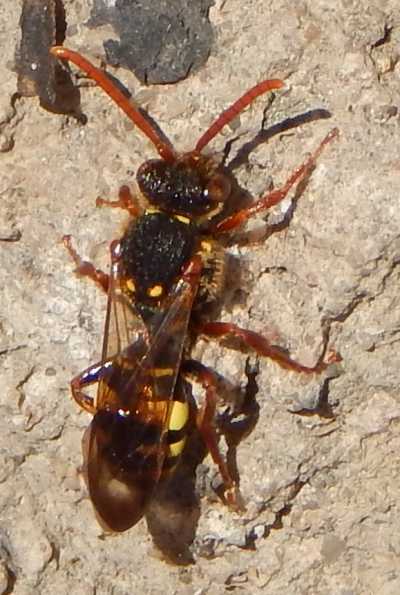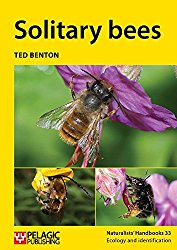Tawny Mining Bee – Andrena fulva
The tawny mining bee, Andrena fulva, is perhaps one of the most easily recognizable species of mining bee - at least, this is true of the females.
About The Tawny Mining Bee – Andrena fulva
The Tawny Mining Bee – Andrena fulva belongs to the Andrenidae bee family.
Females have distinctive tawny (brownish-orange) coloured hair on both the abdomen and thorax. They measure about 1cm in length.
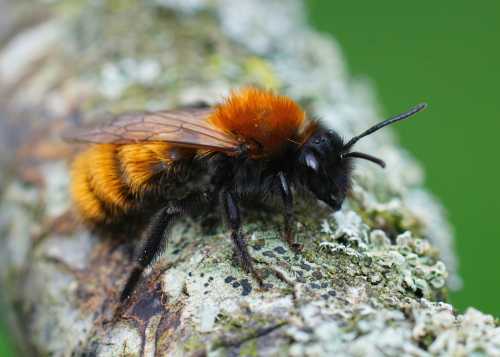 Tawny Mining bee – Andrena fulva - female
Tawny Mining bee – Andrena fulva - femaleMales, however, are smaller and more slender, measuring around 7 - 9mm and somewhat duller in appearance, with pale hair on the thorax and a dark abdomen.
As with all bees in the Andrenidae family, tawny mining bees belong in the short-tongued category. They are univoltine, having one brood and one flight period per year.
Foraging Preferences And Habitat
Tawny mining bees emerge from March onwards, and will be looking for pollen from spring flowering trees such as willows, Blackthorn and various fruit tree blossoms, and they have certainly visited our plum tree.
Dandelions and daisies are popular, along with shrubs such as hawthorn and gooseberry.
This species is found in a wide variety of habitats with appropriate vegetation including flowery brownfield sites, gardens, flower and shrub-rich roadside verges and parks.
Nesting habits of tawny mining bees
This species nests in aggregations in soil with little vegetation. The female produces a 'mini-volcano' at the entrance of her nest tunnel.
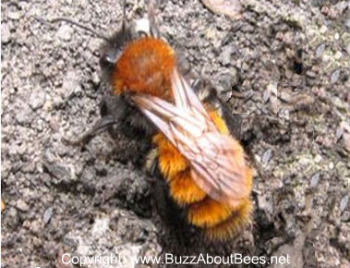
Known parasites
The cleptoparasite nomad bee speces, Nomada panzeri (Panzer's nomad bee) is known to target nests of tawny mining bees.
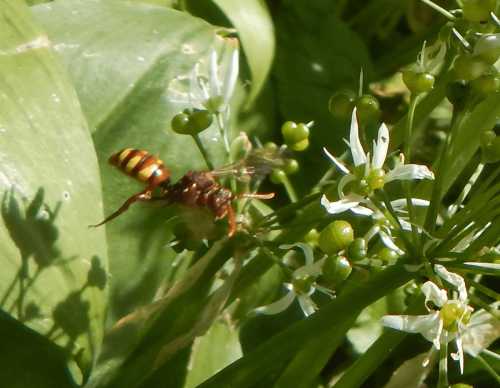 Nomada panzeri (Panzer's nomad bee) - a cleptoparasite known to target the nest burrows of tawny mining bees.
Nomada panzeri (Panzer's nomad bee) - a cleptoparasite known to target the nest burrows of tawny mining bees.Another known enemy of Andrena fulva is the bee-fly, Bombylius major.
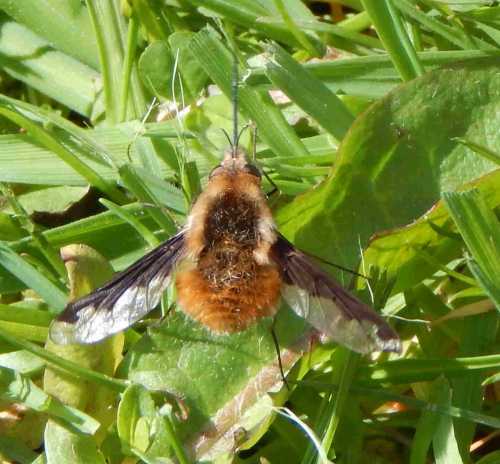 bee-fly, Bombylius major.
bee-fly, Bombylius major.
According to research, the root-maggott fly, Leucophora obtusa is a further enemy.
